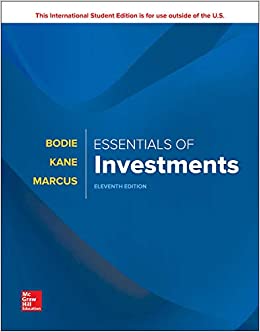Answered step by step
Verified Expert Solution
Question
1 Approved Answer
Read the Cartier Hotel's case study information noted below. As a consultant for the company, you are tasked with researching the hotel industry, current situation,
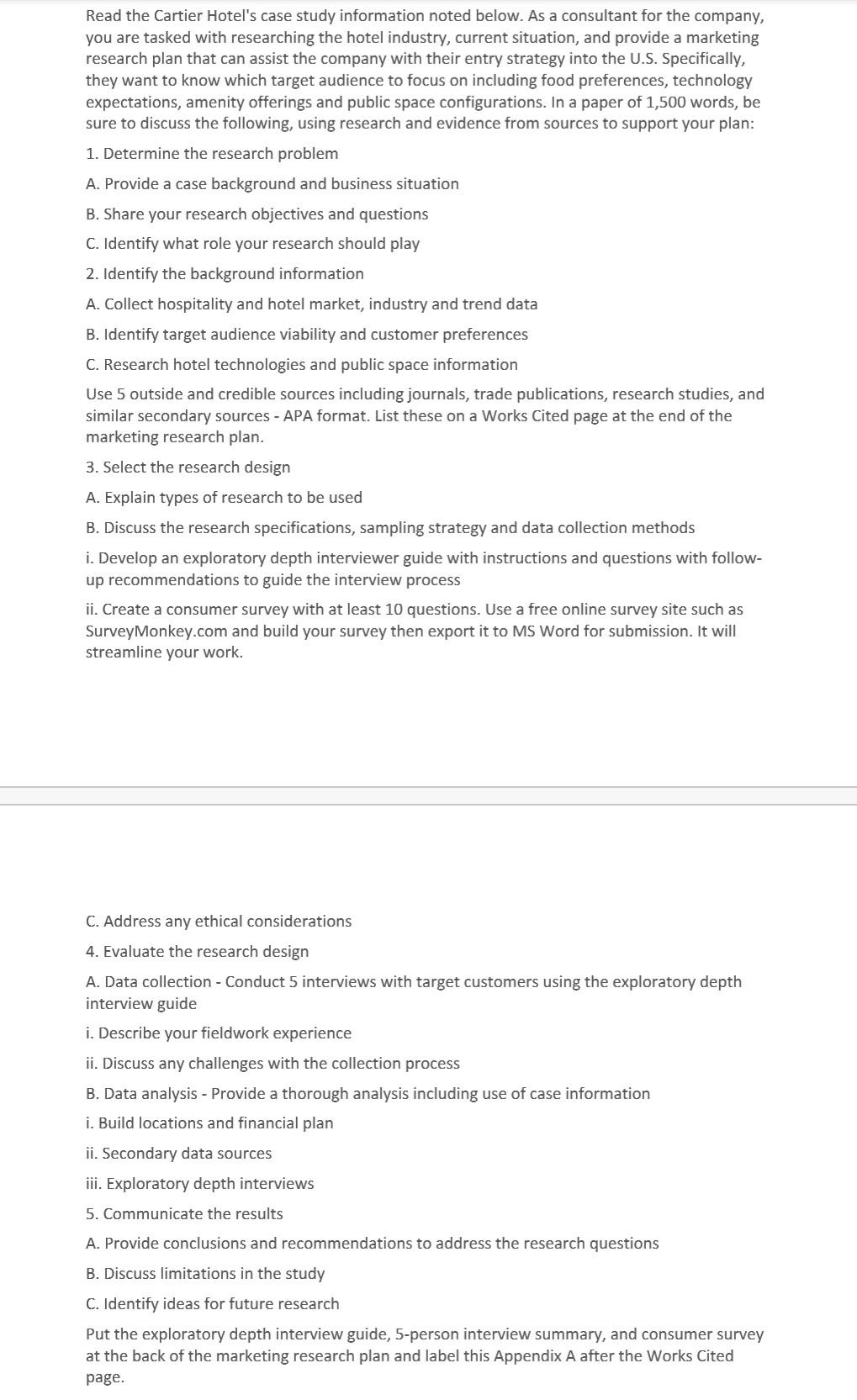
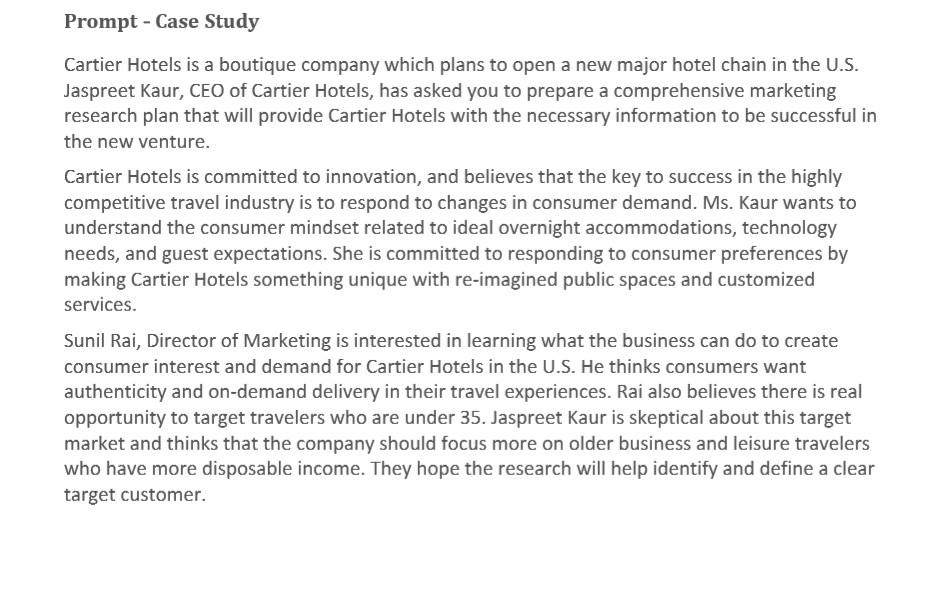
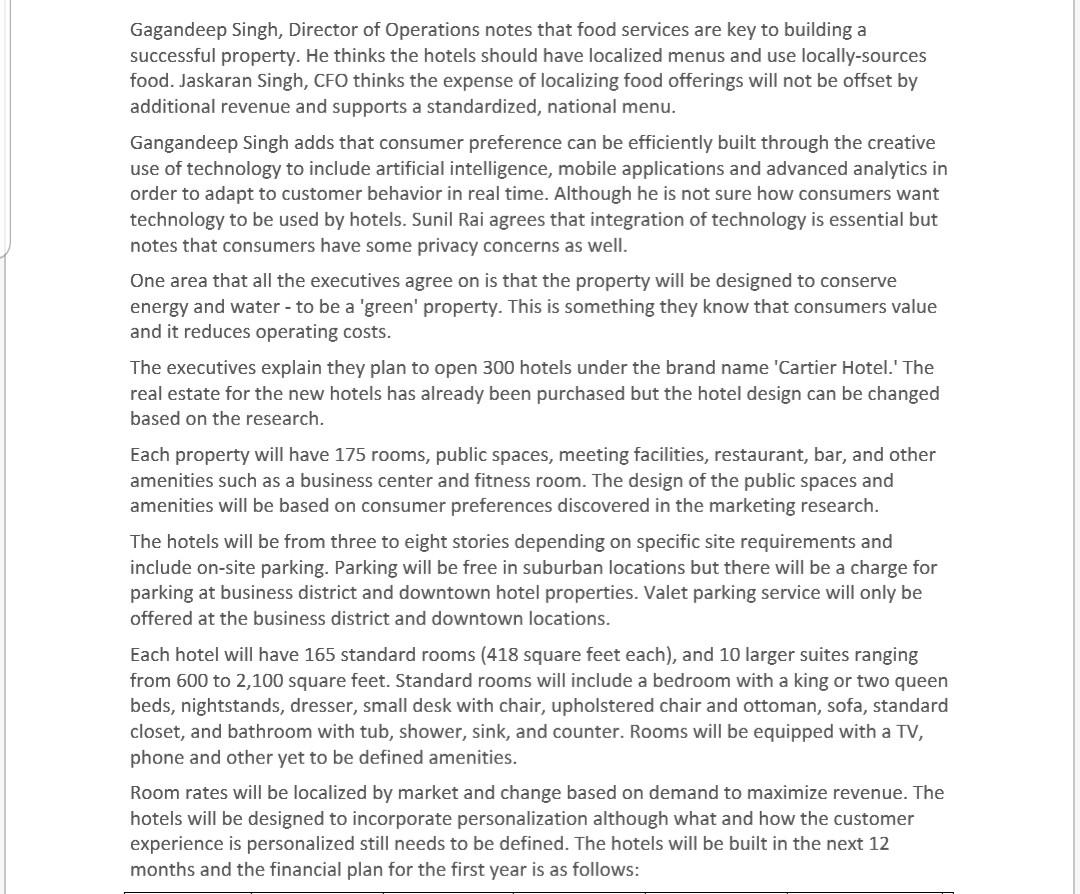
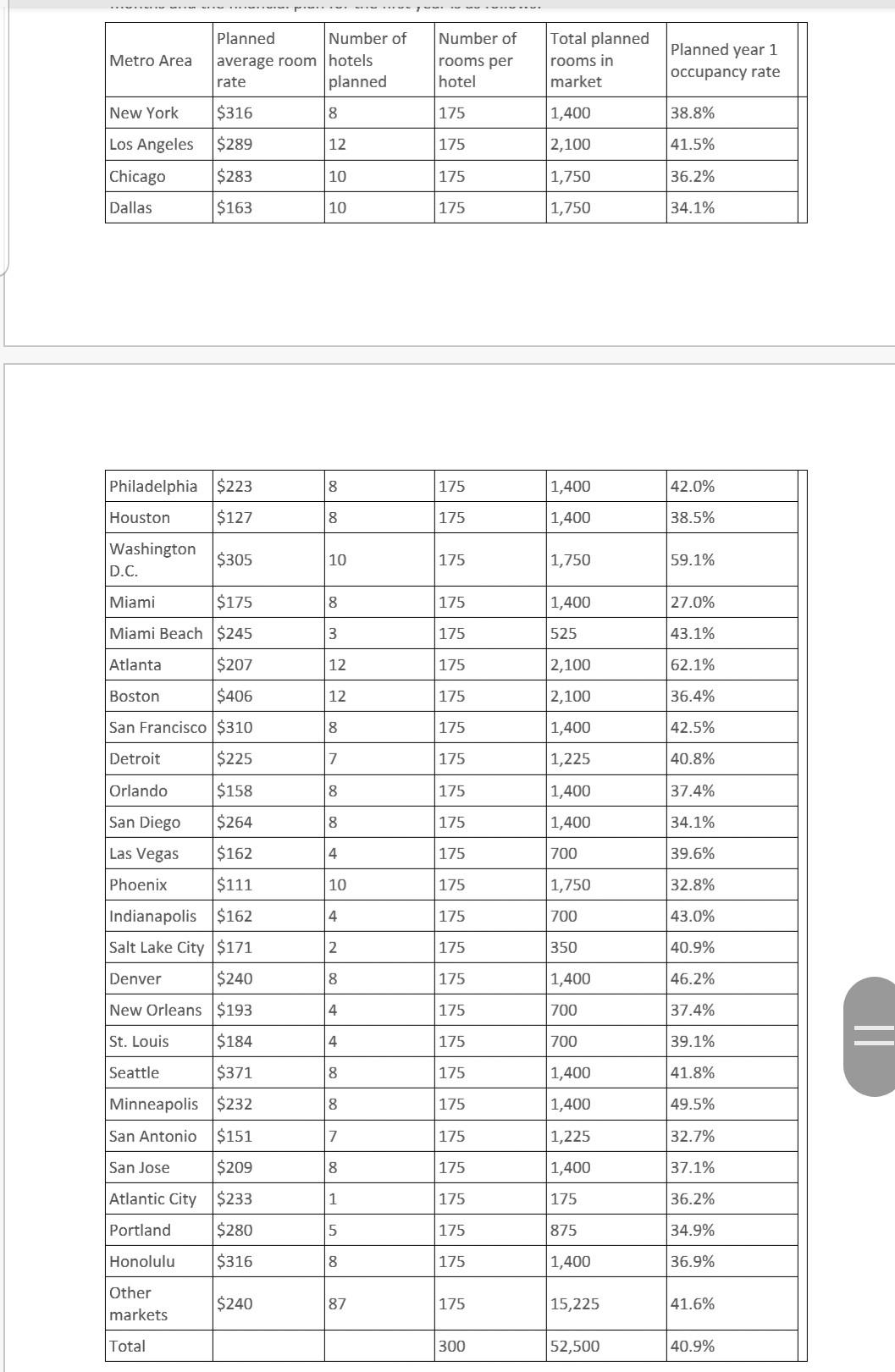
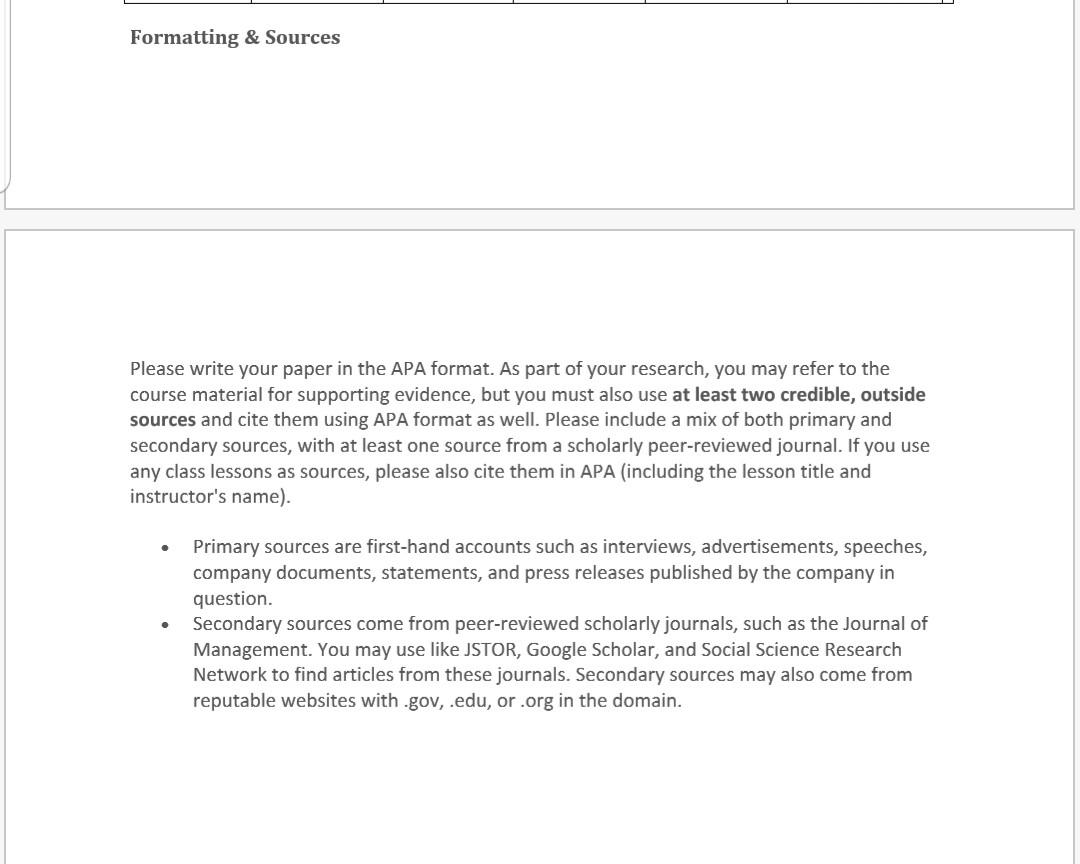
Read the Cartier Hotel's case study information noted below. As a consultant for the company, you are tasked with researching the hotel industry, current situation, and provide a marketing research plan that can assist the company with their entry strategy into the U.S. Specifically, they want to know which target audience to focus on including food preferences, technology expectations, amenity offerings and public space configurations. In a paper of 1,500 words, be sure to discuss the following, using research and evidence from sources to support your plan: 1. Determine the research problem A. Provide a case background and business situation B. Share your research objectives and questions C. Identify what role your research should play 2. Identify the background information A. Collect hospitality and hotel market, industry and trend data B. Identify target audience viability and customer preferences C. Research hotel technologies and public space information Use 5 outside and credible sources including journals, trade publications, research studies, and similar secondary sources - APA format. List these on a Works Cited page at the end of the marketing research plan. 3. Select the research design A. Explain types of research to be used B. Discuss the research specifications, sampling strategy and data collection methods i. Develop an exploratory depth interviewer guide with instructions and questions with follow- up recommendations to guide the interview process ii. Create a consumer survey with at least 10 questions. Use a free online survey site such as SurveyMonkey.com and build your survey then export it to MS Word for submission. It will streamline your work. C. Address any ethical considerations 4. Evaluate the research design A. Data collection - Conduct 5 interviews with target customers using the exploratory depth interview guide i. Describe your fieldwork experience ii. Discuss any challenges with the collection process B. Data analysis - Provide a thorough analysis including use of case information i. Build locations and financial plan ii. Secondary data sources iii. Exploratory depth interviews 5. Communicate the results A. Provide conclusions and recommendations to address the research questions B. Discuss limitations in the study C. Identify ideas for future research Put the exploratory depth interview guide, 5-person interview summary, and consumer survey at the back of the marketing research plan and label this Appendix A after the Works Cited page. Gagandeep Singh, Director of Operations notes that food services are key to building a successful property. He thinks the hotels should have localized menus and use locally-sources food. Jaskaran Singh, CFO thinks the expense of localizing food offerings will not be offset by additional revenue and supports a standardized, national menu. Gangandeep Singh adds that consumer preference can be efficiently built through the creative use of technology to include artificial intelligence, mobile applications and advanced analytics in order to adapt to customer behavior in real time. Although he is not sure how consumers want technology to be used by hotels. Sunil Rai agrees that integration of technology is essential but notes that consumers have some privacy concerns as well. One area that all the executives agree on is that the property will be designed to conserve energy and water - to be a 'green' property. This is something they know that consumers value and it reduces operating costs. The executives explain they plan to open 300 hotels under the brand name 'Cartier Hotel.' The real estate for the new hotels has already been purchased but the hotel design can be changed based on the research. Each property will have 175 rooms, public spaces, meeting facilities, restaurant, bar, and other amenities such as a business center and fitness room. The design of the public spaces and amenities will be based on consumer preferences discovered in the marketing research. The hotels will be from three to eight stories depending on specific site requirements and include on-site parking. Parking will be free in suburban locations but there will be a charge for parking at business district and downtown hotel properties. Valet parking service will only be offered at the business district and downtown locations. Each hotel will have 165 standard rooms (418 square feet each), and 10 larger suites ranging from 600 to 2,100 square feet. Standard rooms will include a bedroom with a king or two queen beds, nightstands, dresser, small desk with chair, upholstered chair and ottoman, sofa, standard closet, and bathroom with tub, shower, sink, and counter. Rooms will be equipped with a TV, phone and other yet to be defined amenities. Room rates will be localized by market and change based on demand to maximize revenue. The hotels will be designed to incorporate personalization although what and how the customer experience is personalized still needs to be defined. The hotels will be built in the next 12 months and the financial plan for the first year is as follows: Metro Area Planned Number of average room hotels rate planned Number of rooms per hotel Total planned rooms in market Planned year 1 occupancy rate New York $316 8 175 1,400 38.8% Los Angeles $289 12 175 2,100 41.5% Chicago $283 10 175 1,750 36.2% Dallas $163 10 175 1,750 34.1% Philadelphia $223 8 175 1,400 42.0% Houston $127 18 175 1,400 38.5% Washington D.C. $305 10 175 1,750 59.1% Miami $175 8 175 1,400 27.0% Miami Beach $245 3 175 525 43.1% Atlanta $207 12 175 2,100 62.1% Boston $406 12 175 2,100 36.4% San Francisco $310 8 175 1,400 42.5% Detroit $225 7 175 1,225 40.8% Orlando $158 8 175 1,400 37.4% San Diego $264 8 175 1,400 34.1% Las Vegas $162 4 175 700 39.6% Phoenix $111 10 175 1,750 32.8% 4 175 700 43.0% Indianapolis $162 Salt Lake City $171 2. 175 350 40.9% Denver $240 8 175 1,400 46.2% New Orleans $193 4 175 700 37.4% St. Louis $184 4 175 700 39.1% Seattle $371 8 175 1,400 41.8% Minneapolis $232 8 175 1,400 49.5% San Antonio $151 7 175 1,225 32.7% San Jose $209 8 175 1,400 37.1% 1 175 175 36.2% Atlantic City $233 Portland $280 5 175 875 34.9% Honolulu $316 8 175 1,400 36.9% Other markets $240 87 175 15,225 41.6% Total 300 52,500 40.9% Formatting & Sources Please write your paper in the APA format. As part of your research, you may refer to the course material for supporting evidence, but you must also use at least two credible, outside sources and cite them using APA format as well. Please include a mix of both primary and secondary sources, with at least one source from a scholarly peer-reviewed journal. If you use any class lessons as sources, please also cite them in APA (including the lesson title and instructor's name). . Primary sources are first-hand accounts such as interviews, advertisements, speeches, company documents, statements, and press releases published by the company in question. Secondary sources come from peer-reviewed scholarly journals, such as the Journal of Management. You may use like JSTOR, Google Scholar, and Social Science Research Network to find articles from these journals. Secondary sources may also come from reputable websites with .gov, .edu, or .org in the domain. Read the Cartier Hotel's case study information noted below. As a consultant for the company, you are tasked with researching the hotel industry, current situation, and provide a marketing research plan that can assist the company with their entry strategy into the U.S. Specifically, they want to know which target audience to focus on including food preferences, technology expectations, amenity offerings and public space configurations. In a paper of 1,500 words, be sure to discuss the following, using research and evidence from sources to support your plan: 1. Determine the research problem A. Provide a case background and business situation B. Share your research objectives and questions C. Identify what role your research should play 2. Identify the background information A. Collect hospitality and hotel market, industry and trend data B. Identify target audience viability and customer preferences C. Research hotel technologies and public space information Use 5 outside and credible sources including journals, trade publications, research studies, and similar secondary sources - APA format. List these on a Works Cited page at the end of the marketing research plan. 3. Select the research design A. Explain types of research to be used B. Discuss the research specifications, sampling strategy and data collection methods i. Develop an exploratory depth interviewer guide with instructions and questions with follow- up recommendations to guide the interview process ii. Create a consumer survey with at least 10 questions. Use a free online survey site such as SurveyMonkey.com and build your survey then export it to MS Word for submission. It will streamline your work. C. Address any ethical considerations 4. Evaluate the research design A. Data collection - Conduct 5 interviews with target customers using the exploratory depth interview guide i. Describe your fieldwork experience ii. Discuss any challenges with the collection process B. Data analysis - Provide a thorough analysis including use of case information i. Build locations and financial plan ii. Secondary data sources iii. Exploratory depth interviews 5. Communicate the results A. Provide conclusions and recommendations to address the research questions B. Discuss limitations in the study C. Identify ideas for future research Put the exploratory depth interview guide, 5-person interview summary, and consumer survey at the back of the marketing research plan and label this Appendix A after the Works Cited page. Gagandeep Singh, Director of Operations notes that food services are key to building a successful property. He thinks the hotels should have localized menus and use locally-sources food. Jaskaran Singh, CFO thinks the expense of localizing food offerings will not be offset by additional revenue and supports a standardized, national menu. Gangandeep Singh adds that consumer preference can be efficiently built through the creative use of technology to include artificial intelligence, mobile applications and advanced analytics in order to adapt to customer behavior in real time. Although he is not sure how consumers want technology to be used by hotels. Sunil Rai agrees that integration of technology is essential but notes that consumers have some privacy concerns as well. One area that all the executives agree on is that the property will be designed to conserve energy and water - to be a 'green' property. This is something they know that consumers value and it reduces operating costs. The executives explain they plan to open 300 hotels under the brand name 'Cartier Hotel.' The real estate for the new hotels has already been purchased but the hotel design can be changed based on the research. Each property will have 175 rooms, public spaces, meeting facilities, restaurant, bar, and other amenities such as a business center and fitness room. The design of the public spaces and amenities will be based on consumer preferences discovered in the marketing research. The hotels will be from three to eight stories depending on specific site requirements and include on-site parking. Parking will be free in suburban locations but there will be a charge for parking at business district and downtown hotel properties. Valet parking service will only be offered at the business district and downtown locations. Each hotel will have 165 standard rooms (418 square feet each), and 10 larger suites ranging from 600 to 2,100 square feet. Standard rooms will include a bedroom with a king or two queen beds, nightstands, dresser, small desk with chair, upholstered chair and ottoman, sofa, standard closet, and bathroom with tub, shower, sink, and counter. Rooms will be equipped with a TV, phone and other yet to be defined amenities. Room rates will be localized by market and change based on demand to maximize revenue. The hotels will be designed to incorporate personalization although what and how the customer experience is personalized still needs to be defined. The hotels will be built in the next 12 months and the financial plan for the first year is as follows: Metro Area Planned Number of average room hotels rate planned Number of rooms per hotel Total planned rooms in market Planned year 1 occupancy rate New York $316 8 175 1,400 38.8% Los Angeles $289 12 175 2,100 41.5% Chicago $283 10 175 1,750 36.2% Dallas $163 10 175 1,750 34.1% Philadelphia $223 8 175 1,400 42.0% Houston $127 18 175 1,400 38.5% Washington D.C. $305 10 175 1,750 59.1% Miami $175 8 175 1,400 27.0% Miami Beach $245 3 175 525 43.1% Atlanta $207 12 175 2,100 62.1% Boston $406 12 175 2,100 36.4% San Francisco $310 8 175 1,400 42.5% Detroit $225 7 175 1,225 40.8% Orlando $158 8 175 1,400 37.4% San Diego $264 8 175 1,400 34.1% Las Vegas $162 4 175 700 39.6% Phoenix $111 10 175 1,750 32.8% 4 175 700 43.0% Indianapolis $162 Salt Lake City $171 2. 175 350 40.9% Denver $240 8 175 1,400 46.2% New Orleans $193 4 175 700 37.4% St. Louis $184 4 175 700 39.1% Seattle $371 8 175 1,400 41.8% Minneapolis $232 8 175 1,400 49.5% San Antonio $151 7 175 1,225 32.7% San Jose $209 8 175 1,400 37.1% 1 175 175 36.2% Atlantic City $233 Portland $280 5 175 875 34.9% Honolulu $316 8 175 1,400 36.9% Other markets $240 87 175 15,225 41.6% Total 300 52,500 40.9% Formatting & Sources Please write your paper in the APA format. As part of your research, you may refer to the course material for supporting evidence, but you must also use at least two credible, outside sources and cite them using APA format as well. Please include a mix of both primary and secondary sources, with at least one source from a scholarly peer-reviewed journal. If you use any class lessons as sources, please also cite them in APA (including the lesson title and instructor's name). . Primary sources are first-hand accounts such as interviews, advertisements, speeches, company documents, statements, and press releases published by the company in question. Secondary sources come from peer-reviewed scholarly journals, such as the Journal of Management. You may use like JSTOR, Google Scholar, and Social Science Research Network to find articles from these journals. Secondary sources may also come from reputable websites with .gov, .edu, or .org in the domain
Step by Step Solution
There are 3 Steps involved in it
Step: 1

Get Instant Access to Expert-Tailored Solutions
See step-by-step solutions with expert insights and AI powered tools for academic success
Step: 2

Step: 3

Ace Your Homework with AI
Get the answers you need in no time with our AI-driven, step-by-step assistance
Get Started


